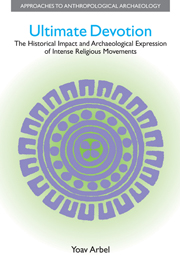 Ultimate Devotion
Ultimate Devotion 3 - One God, One Way
from Part I
Summary
Extreme religious intensity develops in monotheistic faiths and in those that have been notably influenced by them. Even militant nativistic religious movements ironically tend to “borrow” basic theological principles and ideas from Judeo-Christianity, against which they have originally emerged. The Pueblo Revolt's ideology, for example, contained themes such as belief in the resurrection of the dead (compare to Kings II 4:32—35; John 11:17—44; Acts 9:36—41), the nullification of marriages (Ezra 9—10), ritual cleansing in water (Matthew 3:5, II), and the destruction of enemy temples and ritual objects (see Kings I, 15:13; Kings II, II:18, 18:4, 23:6—7). The Catholic Spaniards themselves may have been the unwitting instructors in the latter case, considering the annihilation of the temples and artifacts of New World religions by the earlier conquistadores (Todorov 1984: 200—201, 203—4). The readaptation of Judeo-Christian doctrinal themes is especially common in nativistic millenarianism, as seen in the North American Ghost Dances (La Barre 1970: 229; 232, Hittman 1997: 183—84; Coleman 2000: 5—7), the Cargo Cults of Melanesia and the Pacific (Brewster 1922: 240—41; Crocombe 1961; Williams 1978: 17, 26; Steinbauer 1979: 158) and the millenarian movements of South Africa (see chapter 4).
The connection between religious intensity and monotheism is the subject of this chapter. It focuses not on the deeper psychological and sociological levels but rather on the association between monotheism and intensification in the historical experience of Islam and Christianity.
- Type
- Chapter
- Information
- Ultimate DevotionThe Historical Impact and Archaeological Expression of Intense Religious Movements, pp. 22 - 40Publisher: Acumen PublishingPrint publication year: 2009
